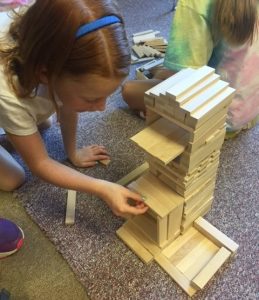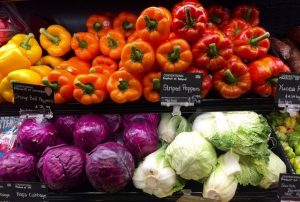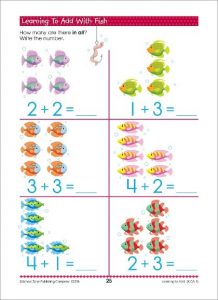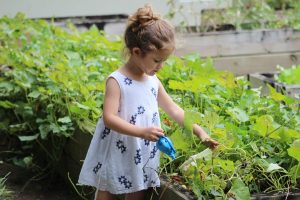It’s tough to find a kid who doesn’t love summer, but even the most enthusiastic summer-lovers get bored… In this article, we share 6 super fun, educational activities that will keep your kids busy all summer long! As we are all homeschooling now, summer may come a bit earlier. Or, you may want to use these activities to supplement your child’s education over May and June.
6. Survey Animals at The Beach, Forest, or Park
 We are surrounded by exciting ecosystems every single day, but many families forget to slow down and take notice. On your next trip to the beach, forest, or park, take a small notebook along to record what you see!
We are surrounded by exciting ecosystems every single day, but many families forget to slow down and take notice. On your next trip to the beach, forest, or park, take a small notebook along to record what you see!
You can choose was info to record in the notebook but we recommend:
- Species – What type of animal?
- Quantity—How many did you see?
- Colors—What does it look like?
- Location—Where was the animal?
- Activity—What was the animal doing when spotted?
- Sounds—What sounds was it making?
- Sketch—Draw the animal
Kids who show a natural interest in birds may also benefit from learning more about beautiful birds or joining a birdwatching website such as ebird.org under the guidance of their parent. These sites track birds all over the world!
5. Build A Castle, Spaceship, & More
 Building activities build more than structures—they build brains too! Building develops math, engineering, and physics skills. Best of all, most kids are naturally drawn to building toys and will be entertained for hours.
Building activities build more than structures—they build brains too! Building develops math, engineering, and physics skills. Best of all, most kids are naturally drawn to building toys and will be entertained for hours.
Younger kids love magnetic building kits that are sold under numerous brands, including Magnatiles and Magformers. The magnets make it easier for the creations to stick together while children still get hands-on experience with geometry, engineering, and that pesky gravity. You will be truly amazed at the shapes and structures your kid creates out of triangles and squares.
As kids get older, more complicated building toys become a hit. There are a variety of plastic and wooden options, including LEGO, K’NEX, and wooden Keva planks. With so much on the market today, there truly is a building toy for everyone—including adults.
Of course, we shouldn’t overlook the power of imagination either. If store-bought building toys are out of the budget, there are endless opportunities to build with the free materials found all around the house. Cardboard, old boxes and egg cartons, rocks of all sizes, popsicle sticks, and books can all be used to create amazing new things.
Did you know? The Vancouver Island Regional Library has STEAM Tinker Totes with Keva Blocks or Magnatiles that parents can borrow for free! (As libraries are closed at the moment but perhaps you can start a sharing program in your neighbourhood!)
4. Practice Math & Money Skills with Grocery Shopping
 One of the best ways to teach kids the value of math is by using it in real life! Shopping at a grocery store (or online) is the perfect opportunity to practice three important life skills:
One of the best ways to teach kids the value of math is by using it in real life! Shopping at a grocery store (or online) is the perfect opportunity to practice three important life skills:
- Adding up purchases
- Calculating the better deal
- Factoring in interest
Adding purchases
First, get your children to add up the cost of items as you browse through the physical or online store. Younger kids can use a calculator, while older kids should be encouraged to do this math mentally. Every time a new item gets added to the cart, they should add it to their total.
Calculating the better deal
Next, teach your kids how to compare the true cost of items. For those of you who need a refresher, you divide the price by the number of grams (or ounces, ml, etc.) to get a “single unit” cost. This gives you two numbers to compare between so you know for sure whether a larger quantity or sale item is actually the better deal.
For example:
| Listed Price | Example Math | Price Per Gram | |
| Cheese A | $8.79 for 500 grams | 8.79 ÷ 500 | 0.01758 / g |
| Cheese B | $11.20 for 700 grams | 11.20 ÷ 700 | 0.016 / g |
We now know with certainty that Cheese B is the better deal.
Many grocery stores have a cheat sheet you can use when checking your kids’ work—look for the small print in the corners of the price tags—but don’t tell your kids about this hack until they’ve learned the real skill. Not all grocery stores have this feature and learning math is just as valuable as learning the shopping skill. Shopping online, you are the cheat sheet ;)!
Factoring in interest
One of the hardest money lessons for kids to learn is that everything costs more than it’s advertised at! Most kids assume they can buy a $20 item as soon as they have $20, and sales tax can be a devastating blow that’s delivered time and time again. Teaching kids to automatically add interest when pricing out items is the perfect way
When first introducing this skill, you can calculate interest on the total estimated purchase cost. As kids get older and more experienced, you can encourage them to add interest to each individual item as it goes into the cart.
Turn it into a game
Finally, get your kids on board with these shopping skills by turning the whole thing into a game. Prizes are optional and at your discretion—you know what motivates your kids best. You can modify as needed based on age and skill level, but game ideas include:
- Guess the total cost – closest guess wins!
- Guess the total cost within $1
- Calculate the best deal fastest (requires 2+ players)
Let the math games begin!
3. Play With Educational Workbooks
 Workbooks are a great way to keep kids learning while fending off boredom. They’re available for almost every subject and every age level and tend to be more interesting than school textbooks. Recreational workbooks replace the stuffy, curriculum-focused material in school texts with activities that are colorful, fun, and age appropriate. Workbooks are great for road trips and rainy days.
Workbooks are a great way to keep kids learning while fending off boredom. They’re available for almost every subject and every age level and tend to be more interesting than school textbooks. Recreational workbooks replace the stuffy, curriculum-focused material in school texts with activities that are colorful, fun, and age appropriate. Workbooks are great for road trips and rainy days.
There are really cool workbooks for teens specifically around Living On Your Own to manage money and set one up for success. They may even enjoy doing the workbook as the content is so relevant to their everyday lives!
Check your local toy store or teacher’s store for workbooks to find a simple and effective learning tool that will help keep your kids busy all summer long!
In order to help with the homeschooling process, we’ve compiled a list of fun, interactive workbooks for all ages. They’ll make life a whole lot easier!
2. Create A Small Kid-Friendly Garden
 Gardening is a great way to get outside and learn a little more about life—literally! Growing plants from seeds is a great way to teach about biology and the importance of ecosystems. Children can also learn about the food chain as their plants get nibbled, or discover a real-life application for chemistry when the soil needs to be corrected.
Gardening is a great way to get outside and learn a little more about life—literally! Growing plants from seeds is a great way to teach about biology and the importance of ecosystems. Children can also learn about the food chain as their plants get nibbled, or discover a real-life application for chemistry when the soil needs to be corrected.
Aside from science lessons, gardening is an awesome skill for kids to learn. When you give kids their own garden space, it teaches discipline and routine, while exposing them to a hobby that can be enjoyed for decades to come.
For older kids, gardening is a great way to de-stress, feel accomplished, and keep out of trouble. It may even turn into a future career, a self-sustaining practice for later in life or for right now during COVID-19.
1. Find a Reading Club…Like Ours :)!
 Most libraries have a summer reading club that encourages kids to get through as many books as possible! Kids who love reading will be naturally drawn to these opportunities, while those who resist may be encouraged by prizes or certificates.
Most libraries have a summer reading club that encourages kids to get through as many books as possible! Kids who love reading will be naturally drawn to these opportunities, while those who resist may be encouraged by prizes or certificates.
At Tutoring…With a Twist*, we offer an online reading club you can join at any point. Our very own twisted tutors read books aloud and post them as videos on our YouTube channel, so you can engage with them at your leisure. If your child has a reading assignment to complete, this totally counts! We’ve read The Hobbit, The Book Thief, The Marrow Thieves, and many more, so check it out!
The VIRL Summer Reading Club gets kids started with a reading record, bookmark, tattoos, and stickers. Prizes are awarded throughout the summer to keep kids engaged and interested.
VIRL also has a Teen Summer Challenge for kids ages 12 to 18 that encourages them to complete all sorts of tasks. These tasks aren’t usually reading related, but they are educational and fun with prizes geared towards teens.
The Greater Victoria Public Library hosts their own BC Summer Reading Club, which follows a slightly different format. Kids are encouraged to read for 20 minutes a day, every day. After reading for 7 days in a row, kids visit the library for a prize! At the end of the program, kids who successfully completed their reading will receive a paperback book or a medal.
If a summer reading club isn’t available in your area, make your own! The goal is to get kids reading habitually and small prizes are usually all it takes to make it happen. You can always reach out to us as some of our Twisted Tutors run Book Club type tutoring sessions!
As a pandemic-sensitive option, it’s a great idea to look for online reading clubs. To help out, we’ve started our own weekly online book clubs! Check out our homeschool help resources to learn all about them.
With all the reading you’ll be doing, you’ll want to keep track of which books you’ve read. Everyday Reading has come up with a super cool graphic reading log you can use—write the names of the books directly on the books, and use lots of colour!
—
What’s one super fun, educational activity that your family is doing this summer? Tell us on Facebook!
*Services provided by With a Twist Education Ltd.
